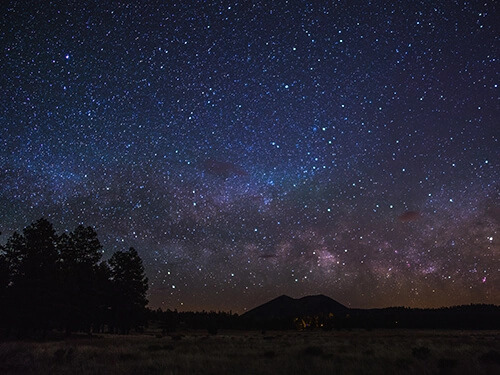Globe at Night – Dark Skies

About this Inquiry
In this inquiry, students predict the best place to stargaze in Arizona based on the brightness of the night sky. Students are introduced to the concept of light pollution and Globe at Night, a global citizen science project in which volunteers monitor limiting magnitude, a measure of night sky brightness. Students examine four histograms in FieldScope showing limiting magnitude readings across four places in Arizona: Phoenix, Flagstaff, Yuma, and the Grand Canyon. They discover variability in the distribution and measures of of night sky brightness within and across these places. Students construct an argument about where the best places for stargazing are based on evidence from the four places they investigated. They discover that Flagstaff is darker than most cities because the city has a long history of implementing outdoor lighting policies. Finally, they consider what they can do in their own community to reduce light pollution. Students have the option to record and contribute to Globe at Night data from their home as part of this inquiry.
Instructional Days
2 days
Learning Goals
- Apply concepts of statistics and probability (mean and variability) to analyze and characterize data about night sky brightness from four places in Arizona, using digital tools.
- Analyze and interpret data from four places to determine similarities and differences in findings.
- Construct an oral argument supported by evidence from data and scientific reasoning about which places in Arizona are the best for stargazing.

Type of Analysis
- Graphing – Histogram
- Mapping – Location Analysis
About this Citizen Science Project:
The Globe at Night program is an international citizen-science campaign to raise public awareness of the impact of light pollution by inviting citizen-scientists to measure their night sky brightness and submit their observations from a computer or smart phone. Light pollution threatens not only our “right to starlight”, but can affect energy consumption, wildlife and health. More than 180,000 measurements have been contributed from people in 180 countries over the last 12 years, making Globe at Night the most successful light pollution awareness campaign to date!
Explore the last 12 years of data in our interactive data map , or see how your city did with our regional map generator . The Globe at Night website is easy to use, comprehensive and holds an abundance of background information. The database is usable for comparisons with a variety of other databases, like how light pollution affects the foraging habits of bats.”